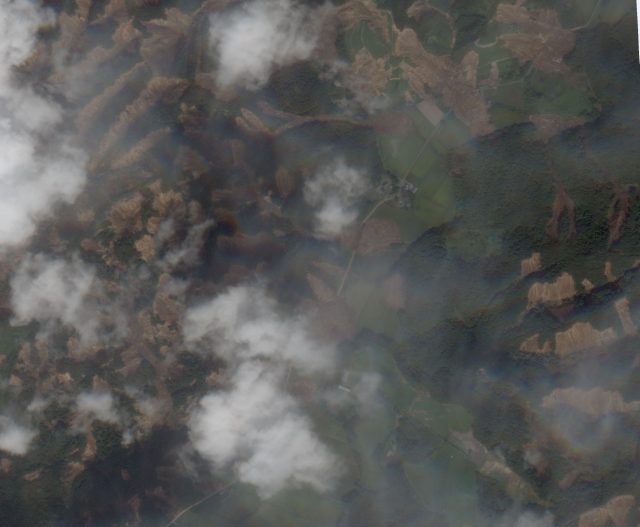13 September 2018
Typhoon Mangkhut, Hurricane Florence and the earthquake in Hokkaido
Posted by Dave Petley
Typhoon Mangkhut, Hurricane Florence and the earthquake in Hokkaido
We seem to be in one of those periods in which there are multiple potential landslide events occurring in a short period. The two currently active, landfalling major, tropical cyclones, Typhoon Mangkhut and Hurricane Florence, both have the potential to be very major landslide-generating events. Of these, and contrary to the focus of the media attention, the most worrying is Typhoon Mangkhut, a formidable storm in every respect. Its projected track across the Philippines overnight on Friday, and then its landfall in mainland China over the weekend, have the potential to cause enormous damages. I am reminded for example of the effects of Typhoon Parma (Peping) in 2009, which triggered landslides that killed hundreds of people.
Meanwhile, Hurricane Florence, although downgraded in the (very one-dimensional) international classification, is also capable of generating substantial numbers of landslides. As I have noted previously, whilst the media likes to focus on the wind, a large part of tropical cyclone damage is usually related to water (storm surge, inland flooding, rainfall triggered landslides). If the storm stalls (and at the time of writing the forecast is that it will do exactly that) then the rainfall impacts will rapidly multiply. In this situation we will probably see extensive landsliding in North and South Carolina. Let’s hope that the storm keeps moving.
The worse case of a stalled tropical cyclone I have seen was Typhoon Morakot in 2009 in Taiwan. Taiwan is a more hazard prone environment than the USA, so we would not expect a repeat on that scale, but the ability of such systems to generate truly epic volumes of rainfall is clear.
And last but not least, the nature and range of landslides triggered by the 2018 Hokkaido Eastern Iburi Earthquake are becoming clearer. Planet Labs have been seeking to collect high resolution imagery using the SkySat system, and have had some success in the last couple of days:-

Planet Labs SkySat image of the landslides from the 2018 Hokkaido Eastern Iburi Earthquake. Image used with permission.
.
Meanwhile, Google earth have published Digital Globe imagery via Google Earth (this link will download the kml file). We are truly in an amazing time; with multiple imagery systems working in parallel, we can capture high quality imagery soon after these events even in cloudy environments. Planet Labs have plans to launch many more satellites in the years ahead, and there are many other providers with ambitious plans too, so this capability will grow.
And, of course, a simple exploration of these satellite images from Hokkaido leaves one astounded by the landslides that this event triggered.
Of the 41 people killed in this earthquake, 36 died in landslides in the Atsuma area. Most of the victims were older than 60 years; most died because the landslides buried them in their homes. It seems increasingly likely that the landslides occurred in a drape of volcanic materials lying over more competent bedrock. This article explores why these landslides might have been triggered in such large numbers in this area; I continue to suspect that liquefaction of saturated layers after the typhoon may have been a key factor. The local mayor explains how the location of the houses had been selected in light of a variety of hazards, including flooding and the impact of mountain winds. Of course, with hindsight it is easy to say that earthquake triggered landslides were not considered adequately. But in multi-hazard scenarios these things are always obvious after the event, but anticipation is very challenging.
Typhoon Mangkhut is the perfect example. I anticipate that we may see very substantive impacts in the Philippines, but at this point there are so many possible outcomes that it is impossible to know with any certainty.
Reference
Planet Team (2018). Planet Application Program Interface: In Space for Life on Earth. San Francisco, CA. https://api.planet.com


 Dave Petley is the Vice-Chancellor of the University of Hull in the United Kingdom. His blog provides commentary and analysis of landslide events occurring worldwide, including the landslides themselves, latest research, and conferences and meetings.
Dave Petley is the Vice-Chancellor of the University of Hull in the United Kingdom. His blog provides commentary and analysis of landslide events occurring worldwide, including the landslides themselves, latest research, and conferences and meetings.